Fingal’s Cave: The inspiration for John Keats, Jules Verne and Pink Floyd
Fingal’s Cave is a sea cave on the island of Staffa, in the inner Hebrides of Scotland (near Mull and Iona). The cave stretches 250 feet into the rock and its roof is 70 feet above the sea.
It has a large arched entrance and is filled by the sea; however, boats cannot normally enter unless the water is very calm.
 The unique structure of Fingal’s Cave. Photo credit
The unique structure of Fingal’s Cave. Photo credit
It was formed by tertiary basalt lava flows which cooled to form the hexagonal columns that make up its interior walls.
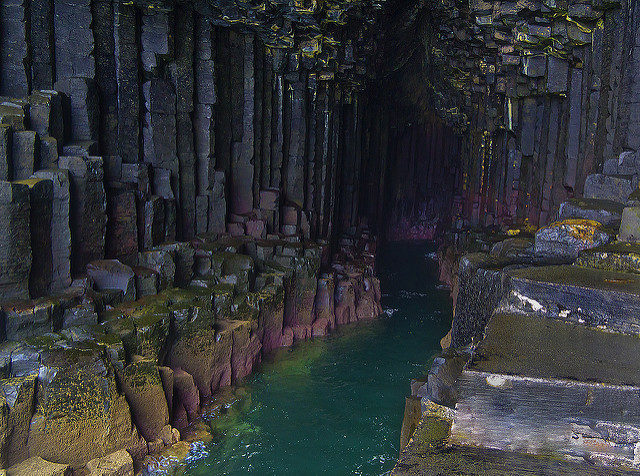 It bears a history and geology unlike any other cave in the world. Photo credit
It bears a history and geology unlike any other cave in the world. Photo credit
It became known as Fingal’s Cave after the eponymous hero of an epic poem by 18th-century Scots poet and historian James Macpherson.
The book was an influence on Goethe, Napoleon, and Sir Banks, who promptly named the Scottish cave, which already had the name Uamh-Binn, after the Irish legend.
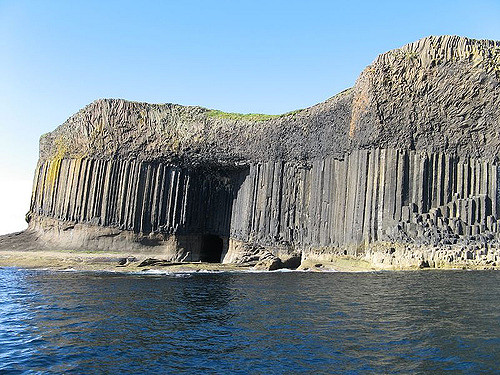 The cave’s Gaelic name, An Uaimh Bhinn, means “the melodious cave.” Photo credit
The cave’s Gaelic name, An Uaimh Bhinn, means “the melodious cave.” Photo credit
Felix Mendelssohn visited the cave in 1829, but he hardly enjoyed seeing it since he was so seasick. However, the visit to Staffa, and the sight and sound of the Atlantic swell tumbling into the Cave made a profound impression on him.
That’s how “Hebrides Overture (Fingal’s Cave)” was born. The evergreen popularity of the Overture provides a continuous string reminder of this wonder of the world.
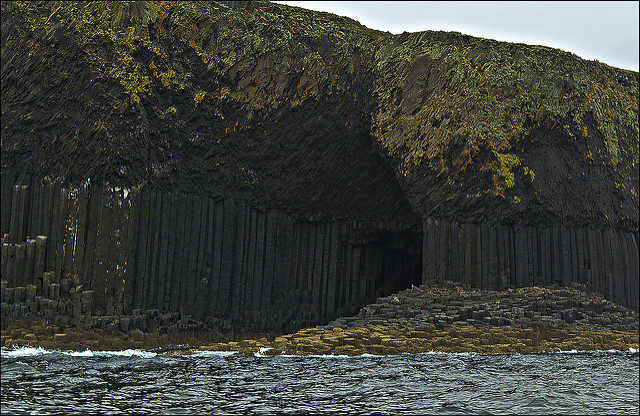 From the legend, Fingal is supposed to have been the father of Ossian, traditional bard of the Gaels. Photo credit
From the legend, Fingal is supposed to have been the father of Ossian, traditional bard of the Gaels. Photo credit
The unearthly sounds that fill the rear of the cave create a fascinating and beautiful soundtrack. People sometimes say that it is Fingal of the legends speaking through the sounds. Indeed, anything seems possible in such an otherworldly place.
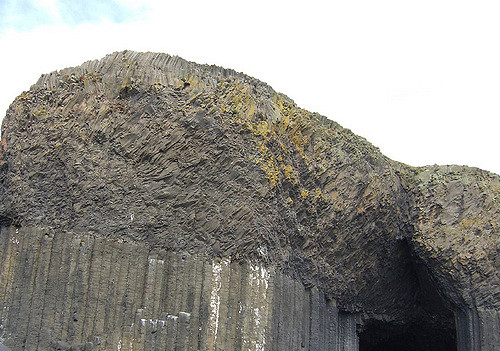 The cave was rediscovered when naturalist Sir Joseph Banks visited it in 1772. Photo credit
The cave was rediscovered when naturalist Sir Joseph Banks visited it in 1772. Photo credit
The cave became the Romantic-Victorian tourist site, after J. M. V. Turner painted “Staffa, Fingal’s Cave”. A lot of poets and artist wanted to see this unique cave, like Lord Tennyson, William Wordsworth, and John Keats.
They all visited the cave, as well as Queen Victoria and Jules Verne.
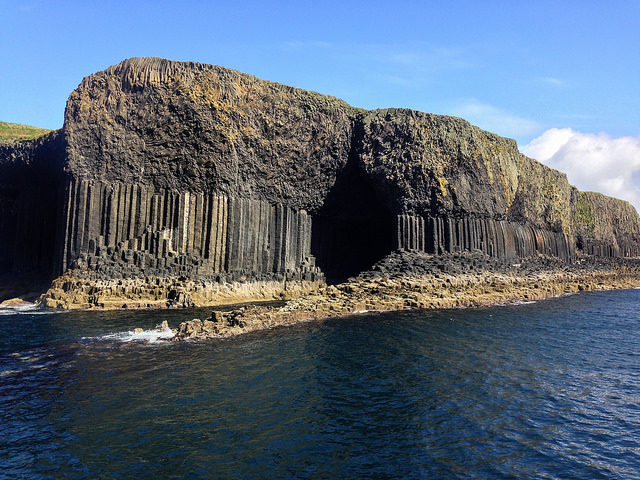 Fingal’s Cave entrance. Photo credit
Fingal’s Cave entrance. Photo credit
Later, Pink Floyd named one of their unreleased songs after the cave, and Matthew Barney used the cave in his Cremaster cycle. After this, the cave never left the public imagination.
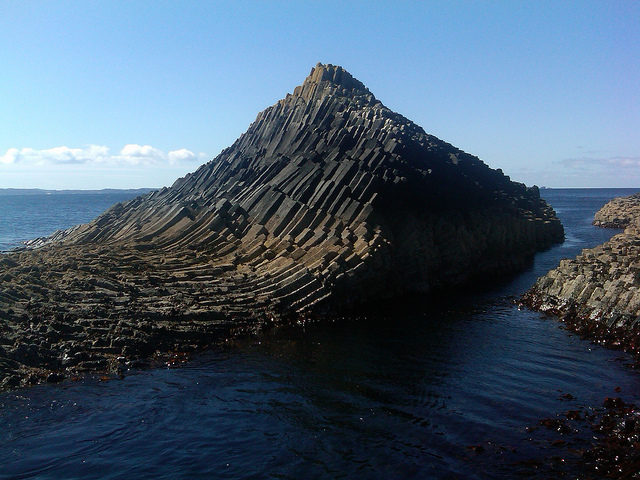 Rock formation on Staffa, near Fingal’s Cave. Photo credit
Rock formation on Staffa, near Fingal’s Cave. Photo credit
It is a really unique structure formed completely in hexagonally jointed basalt. It size, sounds, and colors are remarkable and there are a lot of visitors who go inside to enjoy the cave’s beauty.





